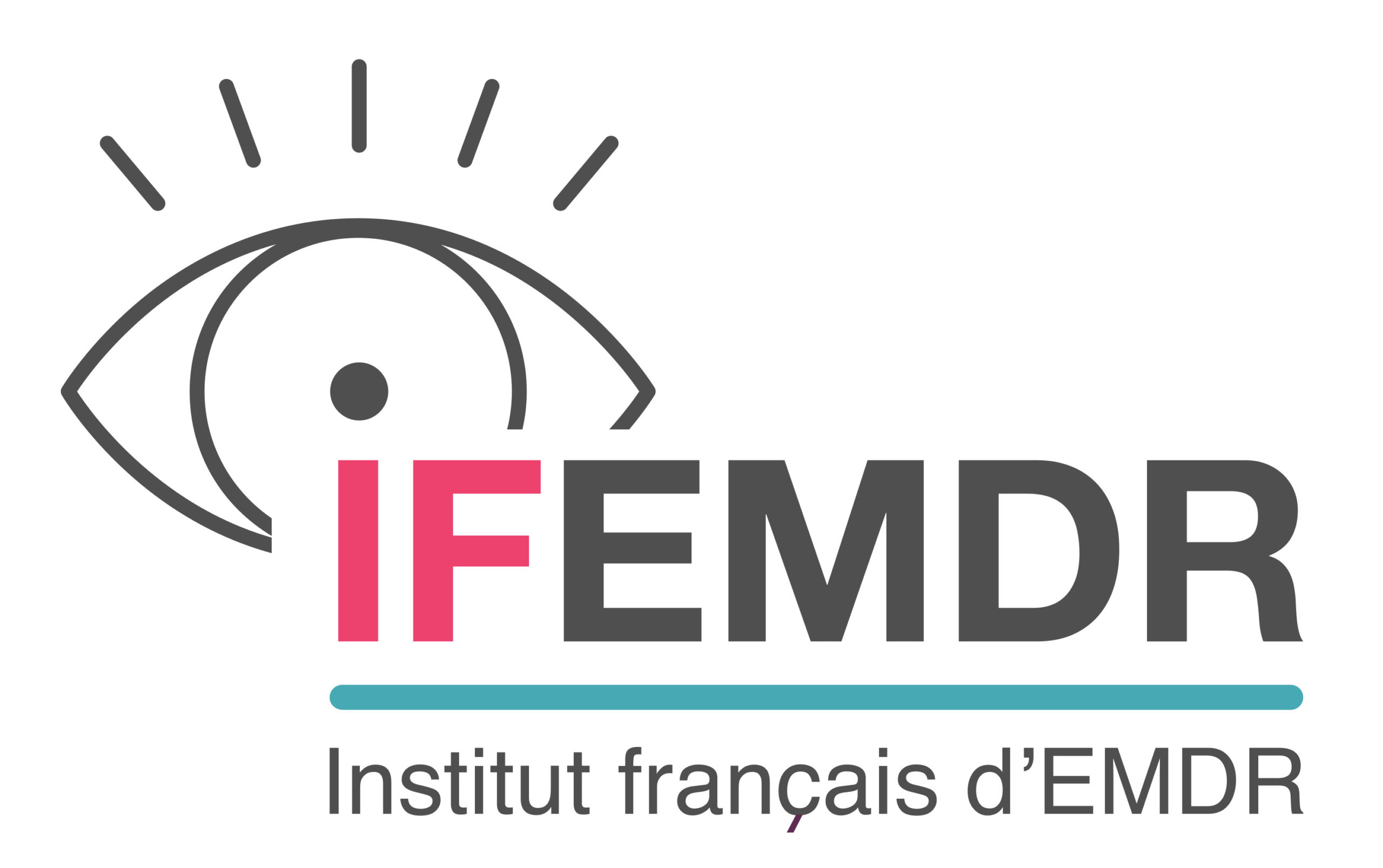
Bibliographie EMDR et TCA
Mis à jour le 2 mai 2024
Liste non exhaustive, mise à jour : janvier 2021
Balbo, M., Zaccagnino, M., Cussino, M., & Civiiotti, C. (2017). Eye Movement Desensitization and Reprocessing (EMDR) and eating disorders: A systematic review. Clinical Neuropsychiatry: Journal of Treatment Evaluation, 14(5), 321–329.
Beer, R. (2005, June). EMDR for adolescents with anorexia nervosa: Evolution of conceptualization and illustration of clinical applications. In EMDR and eating disorders. Symposium conducted at the 6th EMDR Europe Association Conference, Brussels, Belgium
Beer, R., & Hornsveld, H. (2008). [EMDR in the treatment of eating disorders]. In E. ten Broeke, A. de Jongh, & H. Oppenheim (Eds.), Praktijkboek EMDR: Casusconceptualisatie en specifieke patinten-groepen (pp. 201-243). Amsterdam, The Netherlands: Harcourt Press. [Dutch]
Beer et Hornsveld (2008) ont écrit sur l’EMDR et les ED. Bien que la thérapie cognitivo-comportementale (TCC) occupe une place prépondérante dans la directive multidisciplinaire pour les troubles de l’alimentation (11-imbos Institute, 2006), ils ont noté qu’il y avait peu d’études contrôlées et qu’elles ont montré des résultats mitigés avec des rechutes significatives. Par conséquent, les chercheurs et les praticiens recherchaient de nouvelles perspectives sur le traitement. Ils ont décidé de travailler avec leurs adolescents atteints de dysfonction érectile et les adultes souffrant de crises de boulimie. Ils ont également partagé leurs expériences cliniques au sein de leur groupe de travail «EMDR with EDs». L’EMDR faisait partie d’un traitement ambulatoire pluridisciplinaire, il est donc difficile de déterminer quelle intervention a fait quoi. Cependant, ils ont noté que l’EMDR était en mesure de créer des améliorations là où il aurait été difficile ou impossible d’obtenir avec d’autres méthodes. (résumé de Marylin Luber, dans son livre Eye Movement Desensitization and Reprocessing EMDR Therapy Scripted Protocols and Summary Sheets : Treating Eating Disorders, Chronic Pain, and Maladaptive Self-Care Behaviors).
Beer, R., & Roedelof, A. (2016, June). EMDR in the treatment of eating disorders: A jewel in the crown? Presentation at the at the 17th EMDR Europe Association Conference, The Hague
Beer, R. (2018) 1 PROTOCOL FOR EMDR THERAPY IN THE TREATMENT OF EATING DISORDERS. Eye Movement Desensitization and Reprocessing (EMDR) Therapy Scripted Protocols and Summary Sheets: Treating Eating Disorders, Chronic Pain and Maladaptive Self-Care Behaviors, 11.
Bitter, J. (1992, April). Eating disorders. Presentation at the EMDR Network Conference, Sunnyvale, CA.
Boghosian, J. (2020, Oct 29). Complex-PTSD, eating disorders, and the role EMDR plays. Eating Disorder Hope. https://www.eatingdisorderhope.com/blog/complex-ptsd-eating-disorders-and-the-role-emdr-plays
Bloomgarden, A., & Calogero, R. M. (2008) A Randomized Experimental Test of the Efficacy of EMDR Treatment on Negative Body Image in Eating Disorder Inpatients, The Journal of Treatment & Prevention, Volume 16, 2008 – Issue 5, Pages 418-427, doi : https://doi.org/10.1080/10640260802370598
Bravman, N. (2005, September). Using EMDR in the treatment of eating disorders. Presentation at the 10th EMDR International Association Conference, Seattle, WA
Brewerton, T. D. (2008, May 1). The links between PTSD and eating disorders. Psychiatric Times, 25(6), 1-7.
Brewerton, T. D. (2018). An overview of trauma-informed care and practice for eating disorders. Journal of Aggression, Maltreatment & Trauma, 1-18. https://doi.org/10.1080/10926771.2018.1532940
Brown, K. W., McGoldrick, T., & Buchanan, R. (1997). Body dysmorphic disorder: Seven cases treated with eye movement desensitization and reprocessing. Behavioural and Cognitive Psychotherapy, 25(2), 203-207. https://doi.org/10.1017/S1352465800018403
Bruch, H. (1973). Eating disorders: Obesity, anorexia nervosa, and the person within (Vol. 5052). New York, NY: Basic Books.
Burton, A. L., Hay, P., Kleitman, S., Smith, E., Raman, J., Swinbourne, J., Touyz, S. W., & Abbott, M. J. (2017). Confirmatory factor analysis and examination of the psychometric properties of the eating beliefs questionnaire. BMC Psychiatry, 17, 237. doi:10.1186/s12888-017-1394-z
Cameron, V. L. (2013, May). EMDR: Promising treatment for co-occurring eating disorders and child-hood sexual abuse (Master’s thesis, St. Catherine University). Retrieved from http://sophia.stkate .edu/msw_papers/160
Cardazzone, E., Gallucci, M., Callerame, C., Cussino, M., Gelo, O., Pasca, P., & Zaccagnino, M. (2021). Linguistic changes during EMDR sessions: A preliminary single-case study. Counselling & Psychotherapy Research, 12394. https://doi.org/10.1002/capr.12394
Carpenter, M. N. (1999). Eye movement desensitization and reprocessing in battered women: Allevia-tion of post-traumatic stress disorder. Retrieved from Proquest Dissertations and Theses database (UMI. No. 1394355).
Cooke, L. J., & Grand, C. (2006, September). Treating eating disorders using EMDR and its variations. Presentation at the 11th EMDR International Association Conference, Philadelphia, PA
Cooke L. J. , & Grand C. (2009). The neurobiology of eating disorders treatment into the early phases of the EMDR protocol. In R. Shapiro (Ed.), EMDR solutions II: For depression, eating disorders, performance, and more (pp. 129–150). New York, NY: Norton.
Coste, L. (2007, June). [EMDR treatment of anorexia dangerous part of a comprehensive therapy and family]. Presentation at the 8th EMDR Europe Association Conference, Paris, France. French
Culbert, K. M., Racine, S. E., & Klump, K. L. (2015). Research review: What we have learned about the causes of eating disorders—A synthesis of sociocultural, psychological, and biological re-search. Journal of Child Psychology and Psychiatry, 56(11), 1141-1164. doi:10.1111/jcpp.12441
de Jongh, A., ten Broeke, E., & Meijer, S. (2010). Two method questioning approach: A case conceptualization model in the context of EMDR. Journal of EMDR Practice and Research, 4(1), 12-21. doi:10.1891/1933-3196.4.1.12
de Jongh, A., & de Roos, C. (2013). [If memories are in the way]. Modern Medicine, 3, 85-88. [Dutch]. Retrieved from https://www.hgpdesign.nl/news/138/210/Modern-Medicine
Diemer, E. W, Grant, J. D., Munn-Chernoff, M. A., Patterson, D., & Duncan, A. E. (2015). Gender identity, sexual orientation, and eating-related pathology in a national sample of college students. Journal of Adolescent Health, 57(2), 144-149. doi:10.1016/j jadohealth.2015.03.003
Dziegielewski, S. F., & Wolfe, P. (2000). Eye movement desensitization and reprocessing (EMDR) as a time-limited treatment intervention for body image disturbance and self-esteem: A single subject case study design. Journal of Psychotherapy in Independent Practice, 1(3), 1–16. https://doi.org/10.1300/J288v01n03_01
Eating Disorders Coalition. (2016). Facts about eating disorders: What the research shows. Re-trieved from http://eatingdisorderscoalition.org.s208556.gridserver.com/couch/uploads/file/fact -sheet_2016.pdf
Erguney-Okumus, F. E. (2021). Integrating EMDR with enhanced cognitive behavioral therapy in the treatment of bulimia nervosa: A single case study. Journal of EMDR Practice and Research, 15(4), 231-243. http://dx.doi.org/10.1891/EMDR-D-21-00012
Fairburn, C. G., Cooper, Z., Doll, H. A., O’Connor, M. E., Palmer, R. L., & Dalle Grave, R. (2013). En-hanced cognitive behavior therapy for adults with anorexia nervosa: A UK-Italy study. Behavior Research and Therapy, 51, R2-R8. doi:10.1016/j.brat.2012.09.010
Fiol, I. T. (1997). Emotional overeating and EMDR: A case study (Doctoral dissertation). Argosy Uni-versity, Chicago, IL.
Forester, D. (2009). Treating bulimia nervosa with EMDR. In R. Shapiro (Ed.), EMDR Solutions II: For depression, eating disorders, performance, and more (1st Ed.) (pp. 151-164). New York, NY: W. W. Norton & Co.
Forester, D. (2017, April). EMDR with eating disorders and disordered eating. Presentation at the EMDR Canada Annual Conference, Banff, AB
Forester, D. (2020, September-October). EMDR therapy with eating disorders. Presentation at the 25th EMDR International Association Virtual Conference
Freedland, E. (2002, June). Using EMDR with eating disorders. Presentation at the 7th EMDR International Association Conference, San Diego, CA
Freedland, E. (2003, May). Using EMDR with eating disorders. Symposium conducted at the 4th EMDR Europe Association Conference, Rome, Italy
Frieder, P. (2016, October/November). [Pharmacological treatment of eating disorders, personality disorders and dissociative disorders]. Presentation at the 4th EMDR Ibero-American Conference, Buenos Aires, Argentina. Spanish
Gagne, D. A., Von Holle, A., Brownley, K. A., Runfola, C. D., Hofmeier, S., Branch, K. E., & Bulik, C. M. (2012). Eating disorder symptoms and weight and shape concerns in a large web-based convenience sample of women ages 50 and above: Results of the gender and body image (GABI) study. In-ternational Journal of Eating Disorders, 45(7), 832-844. doi:10.1002/eat.22030
Gamba, M. (2005). EMDR integration into the psychotherapy of eating disorders. University of Padova. Retrieved from http://www.emdritalia.it/ita/tesi_di_laurea-M_Gamba_-_Emdr_e_disturbi_del _comportamento.pdf [Italian]
Gordon, R. A. (2001). Eating disorders East and West : A culture-bound syndrome unbound. In M. Nasser, M. Katzman, & R. Gordon (Eds.), Eating disorders and cultures in transition (pp. 1-16). New York, NY: Brunner-Routledge.
Gross, L., & Ratner, H. (2002). The use of hypnosis and EMDR combined with energy therapies in the treatment of phobias and dissociative, posttraumatic stress, and eating disorders. In F. P. Gallo (Ed.), Energy psychology in psychotherapy: A comprehensive sourcebook (1st ed., pp. 219-231). New York, NY: W. W. Norton.
Guillaume, S., Jaussent, I., Maimoun, L., Ryst, A., Seneque, M., Villain, L., Courtet, P. (2016). As-sociations between adverse childhood experiences and clinical characteristics of eating disorders. Scientific Reports, 6, 35761. doi:10.1038/srep35761
Gull, W. W. (1874). Anorexia nervosa (apepsia hysterica, anorexia hysteria). •ansactions of the Clinical Society of London, 7, 22-28.
Halvgaard, K. (2015). Single Case Study: Docs EMDR Psychotherapy Work on Emotional Eating? Journal of EMDR Practice and Research 9, 4, 188-197.
Harris, E. C., & Barraclough, B. (1997). Suicide as an outcome for mental disorders. A meta-analysis. British Journal of Psychiatry, 170, 205-228. doi:10.1192/bjp.170.3.205
Hingorany, S. (2010, July). Long-term treatment effect for pain disorder and eating disorder by using EMDR: A case report. Symposium (Shamin Karim, Chair) conducted at the 1st EMDR Asia Conference, Bali, Indonesia
Hornsfeld, H. (2005, June). Cue exposure and EMDR, a new protocol description of procedure and demonstration of clinical application in the treatment of binge eating. In EMDR and eating disorders. Symposium conducted at the 6th EMDR Europe Association Conference, Brussels, Belgium
Hornsveld, H., & Markus, W. (2014). EMDR bij verslaving. [Protocol for alcohol dependency]. Retrieved from https://hornsveldpsychologenpraktijk.files.wordpress.com/2018/06/peia_en-final -june-20181.pdf
Howard, M. D., & Cox, R. P. (2006, December). Use of EMDR in the treatment of water phobia at Navy boot camp: A case study. Traumatology, 12(4), 302-313. doi:10.1177/1534765606297821
Hudson, J. I., Chase, E. A., & Pope, H. G., Jr. (1998). Eye movement desensitization and reprocessing in eating disorders: Caution against premature acceptance. International Journal of Eating Disorders, 23(1), 1–5. https://doi.org/10.1002/(SICI)1098-108X(199801)23:1<1::AID-EAT1>3.0.CO;2-Q
Hudson, J. I., Hiripi, E., Pope, H. G., & Kessler, R. C. (2007). The prevalence and correlates of eat-ing disorders in the national comorbidity survey replication. Biological Psychiatry, 61(3), 348-358. doi:10.1016/j.biopsych.2006.03.040
Jacobson, I. G., Smith, T. C., Smith, B., Keel, P. K., Amoroso, P. J., Wells, T. S., Ryan, M. A. (2009). Disordered eating and weight changes after deployment: Longitudinal assessment of a large US military cohort. American Journal of Epidemiology, 169(4), 415-427. doi:10.1093/aje/kwn366
Janssen, J. (2012, February). A special case (series): EMDR treatment of early childhood trauma in a client with an eating disorder. Tijdschrift voor Psychotherapie, 38(1), 21-37. doi:10.1007/s12485- 012-0003-3 [Dutch]
Johnson, J. G., Cohen, P., Kasen, S., & Brook, J. S. (2006). Dissociative disorders among adults in the community, impaired functioning, and axis I and H comorbidity. Journal of Psychiatric Research, 40, 131-140. doi:10.1016/j.jpsychires.2005.03.003
Jung, J. H., & Forbes, G. B. (2006). Multidimensional assessment of body dissatisfaction and disor-dered eating in Korean and US college women: A comparative study. Sex Roles, 55(1-2), 39-50. doi:10.1007/s11199-006-9058-3
Jung, J. H., Forbes, G. V., & Lee, Y. J. (2009). Body dissatisfaction and disordered eating among early adolescents from Korea and the US. Sex Roles, 61(1-2), 42-54. doi:10.1007/s11199-009-9609-5
Jung, J. H., Forbes, G. B., & Chan, P. (2010). Global body and muscle satisfaction among college men in the United States and Hong Kong-China. Sex Roles, 63(1-2), 104-117. doi:10.1007/s11199-010-9760-z
Kayano, M., Yoshiuchi, K., Al-Adawi, S., Viemes, N., Dorvlo, A. S., Kumano, H., Akabayashi, A. (2008). Eating attitudes and body dissatisfaction in adolescents: Cross-cultural study. Psychiatry and Clinical Neurosciences, 62(1), 17-25. doi:10.1111/j.1440-1819.2007.01772.x
Kazen, M., Baumann, N., Twenhofel, J. F., & Kuhl, J. (2019). When do anorexic patients perceive their bodies as too fat? Aggravating and ameliorating factors. PLOS ONE, 14(2), e0212612. Open access: https://doi.org/10.1371/journal.pone.0212612
Kennedy, S. (2004, March 31). EMDR An essential “tool” for a counselor’s “toolbox” Arizona Department of Public Safety Crime Victim Services Newsletter, 24, 1-2
Knipe, J. (2015). Loving eyes: « Looking » from one part to another. In J. Knipe, EMDR Toolbox: Theory and treatment of complex PTSD and dissociation (pp. 173-182). New York, NY: Springer Publishing.
Korn, D. L., & Leeds, A. M. (2002). Preliminary evidence of efficacy for EMDR resource development and installation in the stabilization phase of treatment of complex posttraumatic stress disorder. Journal of Clinical Psychology, 58(12), 1465–1487. https://doi.org/10.1002/jclp.10099
Lee, H. Y., & Lock, J. (2007). Anorexia nervosa in Asian-American adolescents: Do they differ from their non-Asian peers. International Journal of Eating Disorders, 40(3), 227-31. doi:10.1002/eat.20364
Lee, S., Ng, K. L., Kwok, K., & Fung, C. (2010). The changing profile of eating disorders at a ter-tiary psychiatric clinic in Hong Kong (1987-2007). International Journal of Eating Disorders, 43(4), 307-314. doi:10.1002/eat.20686
Le Grange, D., Swanson, S. A., Crow, S. J., & Merikangas, K. R. (2012). Eating disorder not other-wise specified presentation in the US population. International Journal of Eating Disorders, 45(5), 711-718. doi:10.1002/eat.22006
Ligman, J. (1999, June). Psychoanalytic integration, eating disorders and EMDR. Presentation at the 4th EMDR International Association Conference, Las Vegas, NV
Luber M. (2009). Eye movement desensitization and reprocessing (EMDR): Scripted protocols: Basics and special situations. New York, NY: Springer Publishing.
Luber M. (2010). Eye movement desensitization and reprocessing (EMDR): Scripted protocols: Special populations. New York, NY: Springer Publishing.
Manfield, P. (1995, June). Narcissistic disorders: Using EMDR with these difficult clients. Presentation at the EMDR Network Conference, Santa Monica, CA
Markus, W, & Hornsveld, H. K. (2015). EMDR en verslaving [EMDR and addiction]. In H-J. Oppen-heim, H. K. Homsveld, E. ten Broeke, & A. de Jongh (Eds.), Praktijkboek EMDR II (pp. 437-491). Amsterdam, the Netherlands: Pearson.
Marques, L., Alegria, M., Becker, A. E., Chen, C.-N., Fang, A., Chosak, A., & Diniz, J. B. (2011). Com-parative prevalence, correlates of impairment, and service utilization for eating disorders across US ethnic groups: Implications for reducing ethnic disparities in health care access for eating disor-ders. International Journal of Eating Disorders, 44(5), 412-420. doi:10.1002/eat.20787
McGee, J. (2009). Addressing retraumatization and relapse when using EMDR with eating disorder patients. In R. Shapiro (Ed.), EMDR Solutions II: For depression, eating disorders, performance, and more (1st Ed.) (pp. 175-182). New York, NY: W. W. Norton & Co.
Meneguzzo, P., Garolla, A., Bonello, E., & Todisco, P. (2021). Alexithymia, dissociation and emotional regulation in eating disorders: Evidence of improvement through specialized inpatient treatment. Clinical Psychology & Psychotherapy, 29(2), 718-724. Open access: https://doi.org/10.1002/cpp.2665
Miceli, E. (2009). Eye movement desensitization and reprocessing (EMDR) in the treatment of eating disorders, with quantitative evaluations using electroencephalograms (QEEG) and self-reports as subjective evaluations (Dissertation). Argosy University, Atlanta, GA.
Miti, G., Onofri, A. (2011). La psicoterapia dei disturbi dissociativi: dalle tecniche cognitivo-comportamentali all’approccio EMDR. Cognitivismo Clinico 8, 1, 73-91.
Mond, J. M., Chen, A., & Kumar, R. (2010). Eating-disordered behavior in Australian and Singapo-rean women: A comparative study. International Journal of Eating Disorders, 43(8), 717-723. doi:10.1002/eat.20771
National Association of Anorexia Nervosa and Associated Disorders. (2018). Eating disorder statistics. Retrieved from http://www.anad.org/get-information/about-eating-disorders/eating-disorders-statistics
O’Brien et Abel (2011) EMDR, addictions, and the stages of change: A road map for intervention. Journal of EMDR Practice & Research, 5(3), 121–130.
O’Dell, K. (2005, April 05). EMDR can fight fears, soften troubling memories. Springfield, MO: Springfield News-Leader, Health, E4
O’Donnell, I. (2002, June). EMDR in the treatment of OCD and eating disorders. Presentation at the 7th EMDR International Association Conference, San Diego, CA
Patriarca, G. (2003, May). Ericksonian hypnotherapy and EMDR: Integration in the therapy of eating disorders of traumatic origin. In Eating disorders. Symposium at the 4th EMDR Europe Association Conference, Rome, Italy
Pike, K. M., & Dunne, P. E. (2015). The rise of eating disorders in Asia: A review. Journal of Eating Disorders, 3, 33. doi:10.1186/s40337-015-0070-2
Pike, K. M., Yamamiya, Y., & Konishi, H. (2011). Eating disorders in Japan: Cultural context, clinical features, and future directions. In R. H. Streigel-Moore, S. A. Wonderlich, B. T. Walsh, & J. Mitchell (Eds.), Developing an evidence-based classification of eating disorders: Scientific findings for DSM-V. Arlington, VA: American Psychiatric Association.
Plassmann, R., & Mergentheim, M. (2003, May). EMDR – Group therapy with patients having eating disorders. In Eating Disorders. Symposium conducted at the 4th EMDR Europe Association Conference, Rome, Italy
Plassmann, R. (2005, June). Inpatient psychotherapy with EMDR for patients with eating disorders. In EMDR and eating disorders. Symposium conducted at the 6th EMDR Europe Association Conference, Brussels, Belgium
Plassmann, R. (Ed.). (2009). [In our own rhythm, the connection allergy disorders EMDR treat-ment of eating disorders, pain, anxiety disorders, tinnitus and addictions]. Giessen, Germany: Psychosozial-Verlag.
Popky, A. J. (2009). The desensitization of triggers and urge reprocessing (DeTUR) protocol. In M. Luber (Ed.), Eye movement desensitization and reprocessing (EMDR) scripted protocols: Special populations (pp. 489-511). New York, NY: Springer Publishing.
Ramachandran, V. S. (2005, September). Vestibular stimulation as therapy for bipolar illness, complex regional pain, PTSD, and phantom pain. Presentation at the 10th EMDR International Association Conference, Seattle, WA
Redford, S. (2020). Eye movement desensitization and reprocessing (EMDR) psychotherapy: A medical guide to heal depression, anxiety, emotional trauma, stress, and panic attacks. Sara D’Arrigo
Rothman, M. (2019, April). Eating disorders and EMDR therapy; utilizing art techniques. Presentation at the EMDR Canada Annual Conference, Vancouver, BC
Savage, J., & Sundwall, M. (Hosts). Episode 60: EMDR and disordered eating with Dr. Kucharski. In Notice That Podcast. Patreon. http://emdr-podcast.com/ep-60-emdr-and-disordered-eating-with-lori-kucharski/?utm_source=rss&utm_medium=rss&utm_campaign=ep-60-emdr-and-disordered-eating-with-lori-kucharski
Scholom, J. (2004, September). Integrating EMDR with eating disorders. Presentation at the 9th EMDR International Association Conference, Montreal, QC
Scholom J. (2009). Integrating eating disorders treatment into the early phases of the EMDR protocol. In R. Shapiro (Ed.), EMDR solutions II: For depression, eating disorders, performance, and more (pp. 114–128): New York, NY: Norton.
Scholom, J. (2010, April). Integrating treatment of eating disorders with EMDR. Presentation at the 6th Western Mass EMDRIA Regional Network Spring Conference, Amherst MA
Schulherr, S. (2003, September). The binge cycle meets EMDR: Bridging the gap. Presentation at the 8th EMDR International Association Conference, Denver, CO
Schulherr, S. (2005). Exiting the binge-diet cycle. In R. Shapiro (Ed.), EMDR solutions: Pathways to healing (pp. 241-262). New York, NY: W. W. Norton.
Seidler, G. H., & Wagner, F. E. (2006). Comparing the efficacy of EMDR and trauma-focused cognitive-behavioral therapy in the treatment of PTSD: A meta-analytic study. Psychological Medicine, 36(11), 1515–1522. https://doi.org/10.1017/S0033291706007963
Seijo, N. (2012). EMDR and eating disorders. Revista Iberoamericana de Psicotraumatologa y Disocia-cM, 4(2). Retrieved from http://revibapst.com/data/documents/YORECHAZADO.pdf
Seijo, N. (2015, August). Treating eating disorders using EMDR therapy. Presentation at the 20th EMDR International Association Conference, Philadelphia, PA
Seijo, N. (2017, April). Approach of trauma attachment and dissociation in eating disorders with EMDR therapy. Presentation (Dolores Mosquera, Chair) at the 3rd EMDR Asia International Conference, Shanghai, China
Seijo, N. (2017, June). EMDR phase 2 of work in eating disorders: Identiying and working with the inner world. Presentation (Kirsten Bergh Johannesson, Chair) at the 18th EMDR Europe Association Conference, Barcelona, Spain
Seijo, Natalia. (2018). The Rejected Self EMDR Therapy Protocol for Body Image Distortion : Treating Eating Disorders, Chronic Pain, and Maladaptive Self-Care Behaviors. 10.1891/9780826194725.0007.
Seijo, Natalia & Luber, Marilyn. (2018). Summary Sheet : EMDR Therapy Protocol for Eating Disorders: Treating Eating Disorders, Chronic Pain, and Maladaptive Self-Care Behaviors. 10.1891/9780826194725.0006.
Seijo, Natalia. (2018). EMDR Therapy Protocol for Eating Disorders : Treating Eating Disorders, Chronic Pain, and Maladaptive Self-Care Behaviors. 10.1891/9780826194725.0005.
Seijo, Natalia & Luber, Marilyn. (2018). Summary Sheet : The Rejected Self EMDR Therapy Protocol for Body Image Distortion: Treating Eating Disorders, Chronic Pain, and Maladaptive Self-Care Behaviors. 10.1891/9780826194725.0008.
Seubert, A. & Lightsone, J. (2009). The case of mistaken identity: Ego states and eating disorders. In R. Shapiro (Ed.), EMDR Solutions II: For depression, eating disorders, performance, and more (1st Ed.) (pp. 193-217). New York, NY: W. W. Norton & Co.
Seubert, A. (2010, September/October). The unforgiven: EMDR, ego state therapy, attachment repair and forgiveness in the treatment of eating disorders. Presentation at the 15th EMDR International Association Conference, Minneapolis, MN
Seubert, A., & Virdi, P. (Eds.). (2018). Rauma-informed approaches to eating disorders. New York, NY: Springer Publishing.
Seubert, A. (2018). Becoming known: A relational model utilizing gestalt and ego state-assisted EMDR in treating eating disorders. Journal of EMDR Practice and Research, 12(2), 71-86. doi:10.1891/1933-3196.12.2.71
Shapiro, F. (1995). Eye movement desensitization and reprocessing (EMDR): Basic principles, protocols, and procedures. New York, NY: Guilford Press.
Shapiro, F. (1998). Eye movement desensitization and reprocessing (EMDR): Historical context, recent research, and future directions. In L. Vandecreek, S. Knapp, & T. L. Jackson (Eds.), Innovations in clinical practice: A source book (pp. 143-162). Sarasosta, FL: Professional Resource Press.
Shapiro, F. (2001). Eye movement desensitization and reprocessing (EMDR): Basic principles, protocols, and procedures (2nd ed.). New York, NY: Guilford Press.
Shapiro, R. (2009). EMDR Solutions II: For depression, eating disorders, performance, and more. New York, NY: W W Norton.
Shapiro, F. (2014). The role of eye movement desensitization and reprocessing (EMDR) therapy in medicine : addressing the psychological and physical symptoms stemming from adverse life experiences. The Permanente Journal, 18, 1, 7177.
Siegel, D. J. (1999). The developing mind: Tbward a neurobiology of interpersonal experience. New York, NY: Guilford Press.
Smajić, V. A., & de la Fosse, C. (2019). EMDR treatment for anorexia nervosa triggered by early traumatic experiences. Psychotherapy in Achieving Health and Well-being for Children and Young People, 2(2), 65-76.
Smink, F. E., van Hoeken, D., & Hoek, H. W. (2012). Epidemiology of eating disorders: Incidence, preva-lence and mortality rates. Current Psychiatry Reports, 14(4), 406-414. doi:10.1007/s11920-012-0282-y
Solomon, R. M., Shapiro, F. (2008). EMDR and the adaptive information processing modelpotential mechanisms of change. Journal of EMDR practice and Research, 2, 4, 315325.
Speranza, A. M., & Alberigi, E. (2006). La relazione tra abuso e disturbi alimentari: it ruolo della dis-sociazione. Maltrattamento e Abuso all’Infanzia, 8(1), 23-47.
Steiger, H., & Zankor, M. (1990). Sexual traumata among eating-disordered, psychiatric, and normal female groups: Comparison of prevalences and defense styles. Journal of Interpersonal Violence, 5, 74-86. doi:10.1177/088626090005001006
The Renfrew Center Foundation for Eating Disorders. (2003). Eating disorders 101 guide: A summary of issues, statistics and resources. Philadelphia, PA: The Renfrew Center.
Trimbos Institute. (2006). Multidisciplinaire Richtlijn Eetstoornissen [Multidisciplinary Guideline for Eating Disorders]. Diagnostiek en behandeling van eetstoornissen. Houten, the Netherlands: Trimbos-Instituut.
Tsai, G. (2000). Eating disorders in the Far East. Eating and Weight Disorders-Studies on Anorexia, Bulimia and Obesity, 5(4), 183-197. doi:10.1007/bf03354445
Vandereycken, W., & van Deth, R. (1990). A tribute to Lasegue’s description of anorexia nervosa (1873), with completion of its English translation. British Journal of Psychiatry, 157, 902-908. doi:10.1192/bjp.157.6.902
van der Vleugel, B., van den Berg, D., de Bont, P., Staring, T., & de Jongh, A. (2016). EMDR for trau-matized patients with psychosis. In M. Luber (Ed.), Eye movement desensitization and reprocess-ing (EMDR) therapy: Scripted protocols and summary sheets: Reating trauma- and stressor-related conditions (pp. 97-148). New York, NY: Springer Publishing.
Van Trier, J. (2009). Case 3—Plaything of my emotions …: An eating disorder after a rape at Ibiza: An unexpected turn in the treatment. In H. K. Hornsveld & S. Berendsen (Eds.), Casusboek EMDR, 25 voorbeelden uit de praktij (pp. 75-84.) Houten, the Netherlands: Bohn Stafleu Van Loghum.
Vize, C. M., & Cooper, P. J. (1995). Sexual abuse in patients with eating disorder, patients with de-pression and normal controls: A comparative study. British Journal of Psychiatry, 167, 80-85. doi:10.1192/bjp.167.1.80
Wan, F., Faber, R. J., & Fung, A. (2003). Perceived impact of thin female models in advertising: aAcross-cultural examination of third person perception and its impact on behaviors. Asia Pacific Journal of Marketing and Logistics, 5(1/2), 51-73. doi:10.1108/13555850310765079
Welch, S., & Fairburn, C. G. (1994). Sexual abuse and bulimia nervosa: Three integrated case control comparisons. American Journal of Psychiatry, 151, 402-407. doi:10.1176/ajp.151.3.402
Yasar, A. B., Usta, F. D., Abamor, A. E., Taycan, S. E., & Kaya, B. (2017). EMDR therapy on trauma-based restrictive eating cases. European Psychiatry, 41, S560-S561. doi:10.1016.j.eurpsy.2017.01.81
Yaşar, A. B., Abamor, A. E., Usta, F. D., Taycan, S. E., & Kaya, B. (2019) Two cases with avoidant/restrictive food intake disorder (ARFID): Effectiveness of EMDR and CBT combination on eating disorders (ED), Klinik Psikiyatri Dergisi, 22(4). doi:10.5505/kpd.2019.04127
Zaccagnino, M. (2016). EMDR protocol for the management of dysfunctional eating behaviors in anorexia nervosa. Eye movement desensitization and reprocess‐ing (EMDR) scripted protocols and summary sheets: treating trauma, anxiety, and mood‐related conditions. New York: Springer.
Zaccagnino, M. (2016, June). EMDR protocol for the management of dysfunctional eating behaviors in anorexia nervosa. Presentation at the at the 17th EMDR Europe Association Conference, The Hague
Zaccagnino, M., Cussino, M., Callerame, C., Civilotti, C., & Fernandez, I. (Submitted 2016). EMDR and CBT for anorexic patients: A clinical comparative study, eating and weight disorders—Studies on anorexia, bulimia and obesity.
Zaccagnino, M., Cussino, M., Callerame, C., Civilotti, C., & Fernandez, I. (2017a, February). EMDR in anorexia nervosa : From a theoretical framework to the treatment guidelines. In I. Jauregui-Lobera (Ed.), Eating disorders-A paradigm of the biopsychosocial model of illness (pp. 195-213). Rijeka, Croatia: InTech.
Zaccagnino, M., Cussino, M., Callerame, C., Civilotti, C., & Fernandez, I. (2017). Anorexia nervosa and EMDR: A clinical case. Journal of EMDR Practice and Research, 11(1), 43–53. https://doi.org/10.1891/1933-3196.11.1.43
Zaccagnino, M., Cussino, M., & Civilotti, C. (2017, October). Eye movement desensitization and reprocessing (EMDR) and eating disorders: A systematic review. Clinical Neuropsychiatry, 14(5), 321-329.
Zaccagnino, M., Cussino, M., Callerame, C., Civilotti, C., & Fernandez, I. (2018) Anorexie mentale et EMDR : un cas clinique, Journal of EMDR Practice and Research, Volume 12, Issue 4, 2018, , DOI :10.1891/1933-3196.12.4.E64
Zaccagnino, M. (2019, June). EMDR and eating disorders. Presentation at the 20th EMDR Europe Association Conference, Krakow, Poland
Zillhardt, P. (2007, June). [EMDR therapy with eating disorders]. Presentation at the 8th EMDR Europe Association Conference, Paris, France. French
En savoir plus
Dossier EMDR et TCA (publication du dossier en janvier 2021)



